Taking Eggs for the Future
Ron Wilson
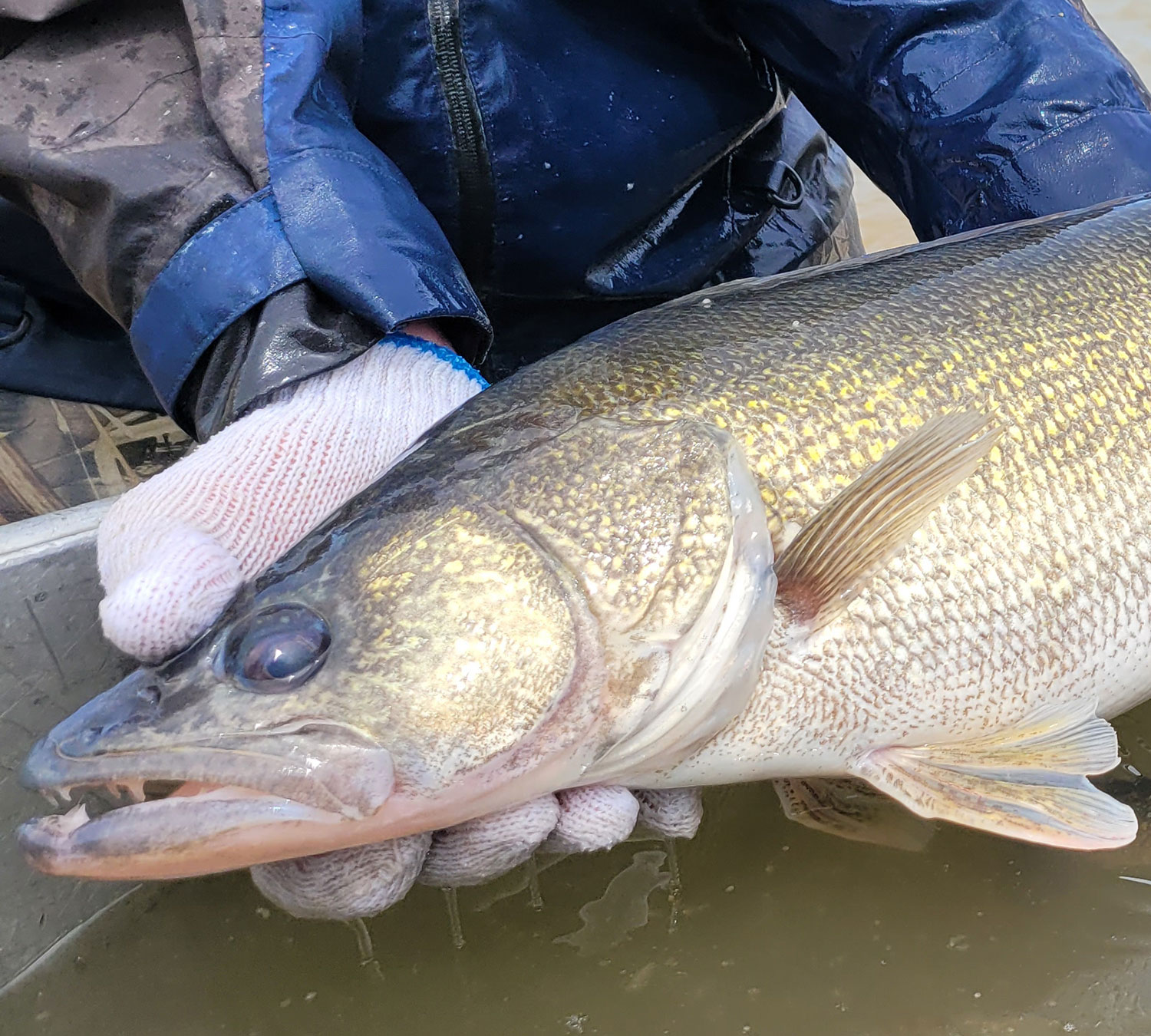
With a record number of walleye lakes on North Dakota’s landscape, what went on at waters like Lake Sakakawea and Devils Lake in late April and early May is important.
Jerry Weigel, Game and Fish Department production/development section supervisor, said taking eggs and milt from Sakakawea and Devils Lake walleye, raising the eggs in Garrison Dam National Fish Hatchery, and later releasing millions of fingerlings in the dozens of prairie walleye lakes and elsewhere is vital to maintaining those fisheries to meet angler expectations.
Weigel said the 2022 walleye egg goal was about 58 million eggs.
“We got 62 million eggs so far, and our crews are still taking eggs,” he said a few days before mid-May. “With the crazy weather, you just never know the quality. I would say, though, we have enough eggs to certainly stock all our hatchery ponds and meet our priority commitments.”
No surprise, Lake Sakakawea walleye provided the majority of the eggs in spring.
“For much of the last decade, the vast majority of our walleye eggs have come from Sakakawea,” said Dave Fryda, Department Missouri River System supervisor. “Overall, the fishery in Lake Sakakawea is still in good shape. We're able to take ample numbers of quality eggs for use throughout North Dakota.”
Yet, declining water levels on Sakakawea could change things down the road.
“While the walleye population is still doing really good in Sakakawea, we have some concerns in the coming years as we’re at the lowest level we’ve been in well over a decade,” Fryda said. “And where we go from here in the next year or two is probably kind of the turning point. We're still in good shape, but if water levels continue to decline, we could see some compromise in the fishery.”

Game and Fish Department fisheries personnel unload walleye netted in Lake Sakakawea’s White Earth Bay.

Todd Caspers, Department fisheries biologist, with a walleye from Devils Lake’s Six Mile Bay earlier this spring.
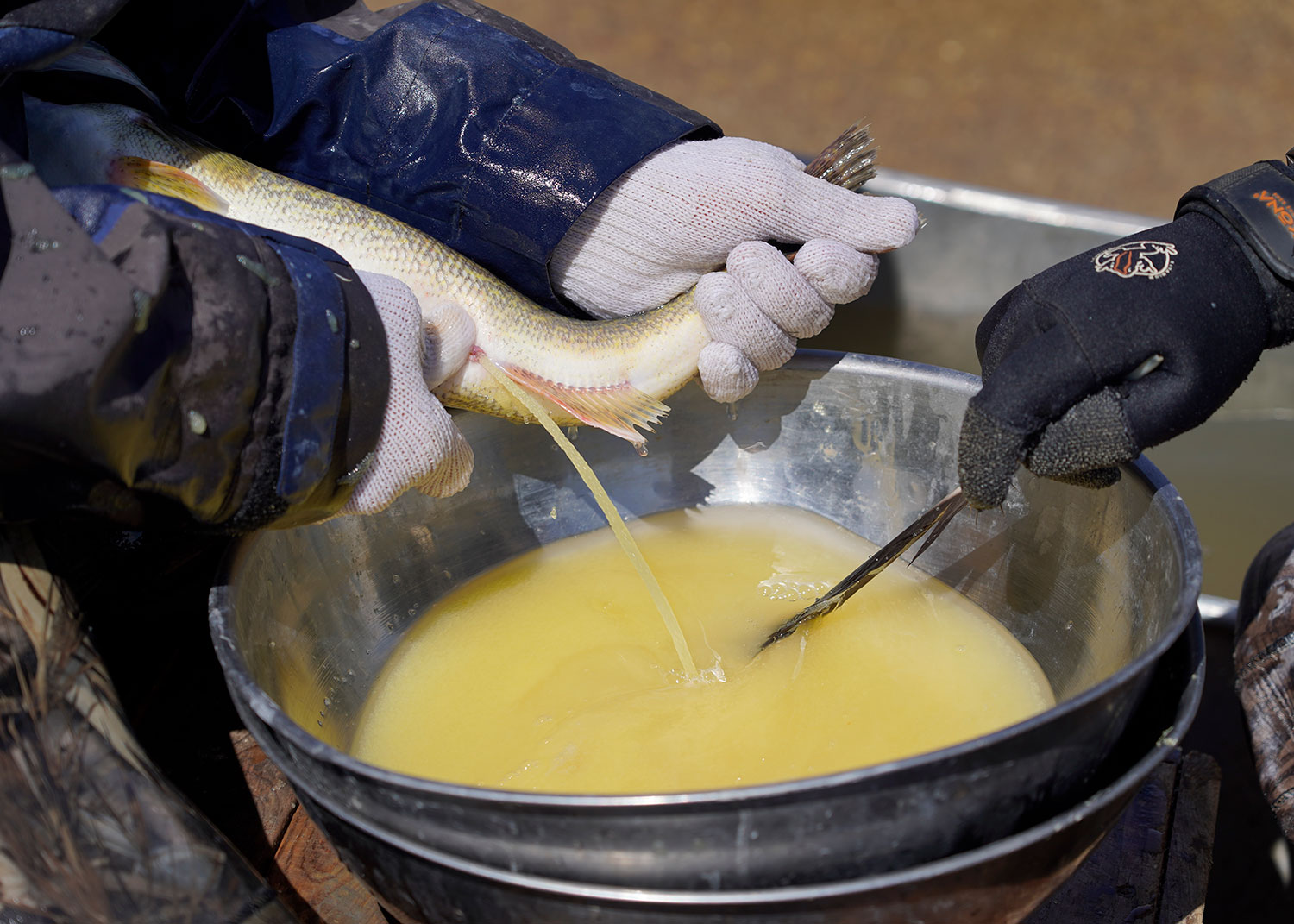
Fisheries personnel harvest eggs from a female walleye. On average, a female walleye produces about 200,000 eggs.
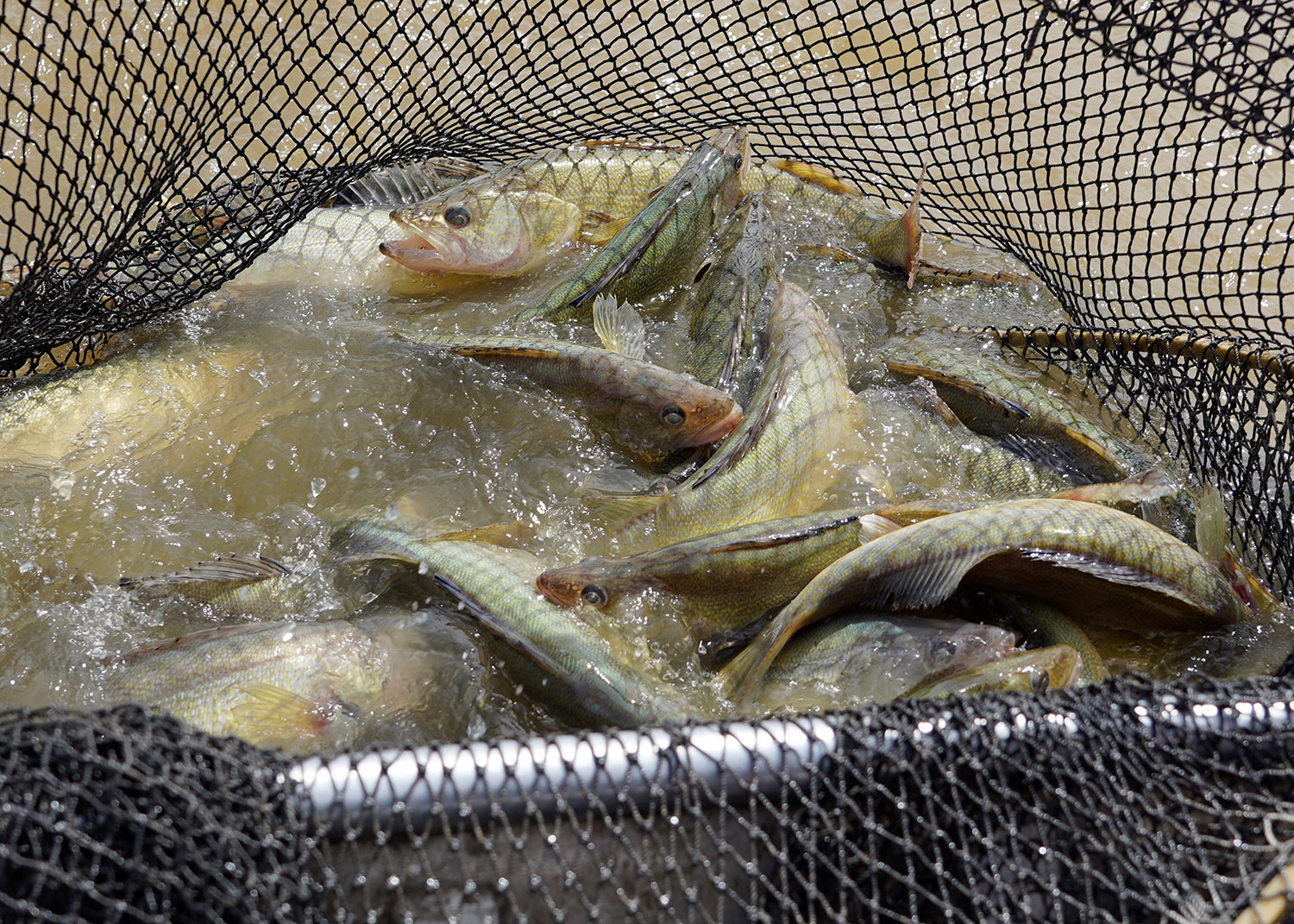
Walleye captured in trap nets from Lake Sakakawea’s White Earth Bay.
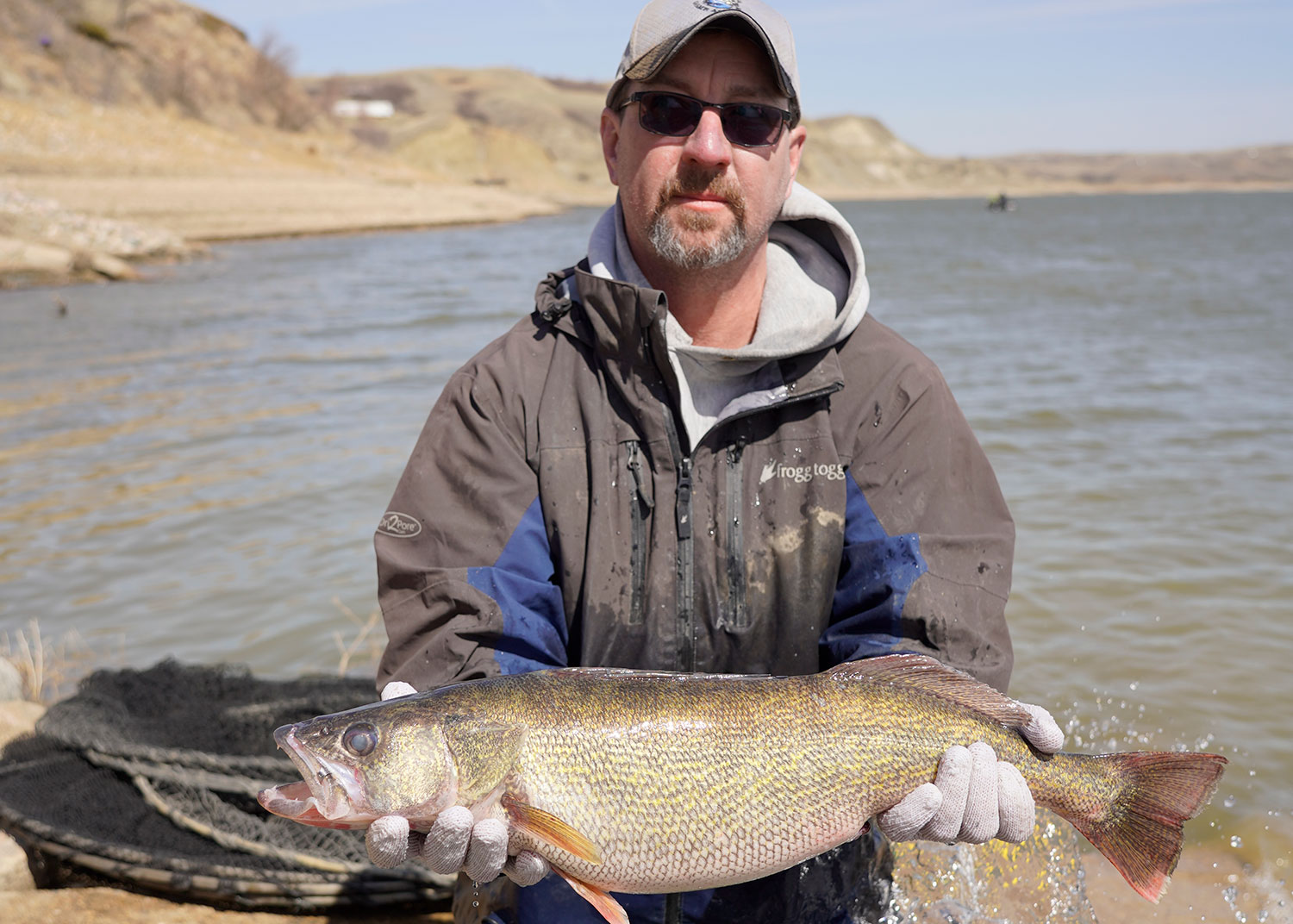
Dave Fryda, Department fisheries supervisor, Riverdale, said the walleye spawn in spring is driven by photoperiod and water temperature.

Fisheries personnel use washing jars on site to wash the excess clay away that was applied to keep the walleye eggs from sticking together.
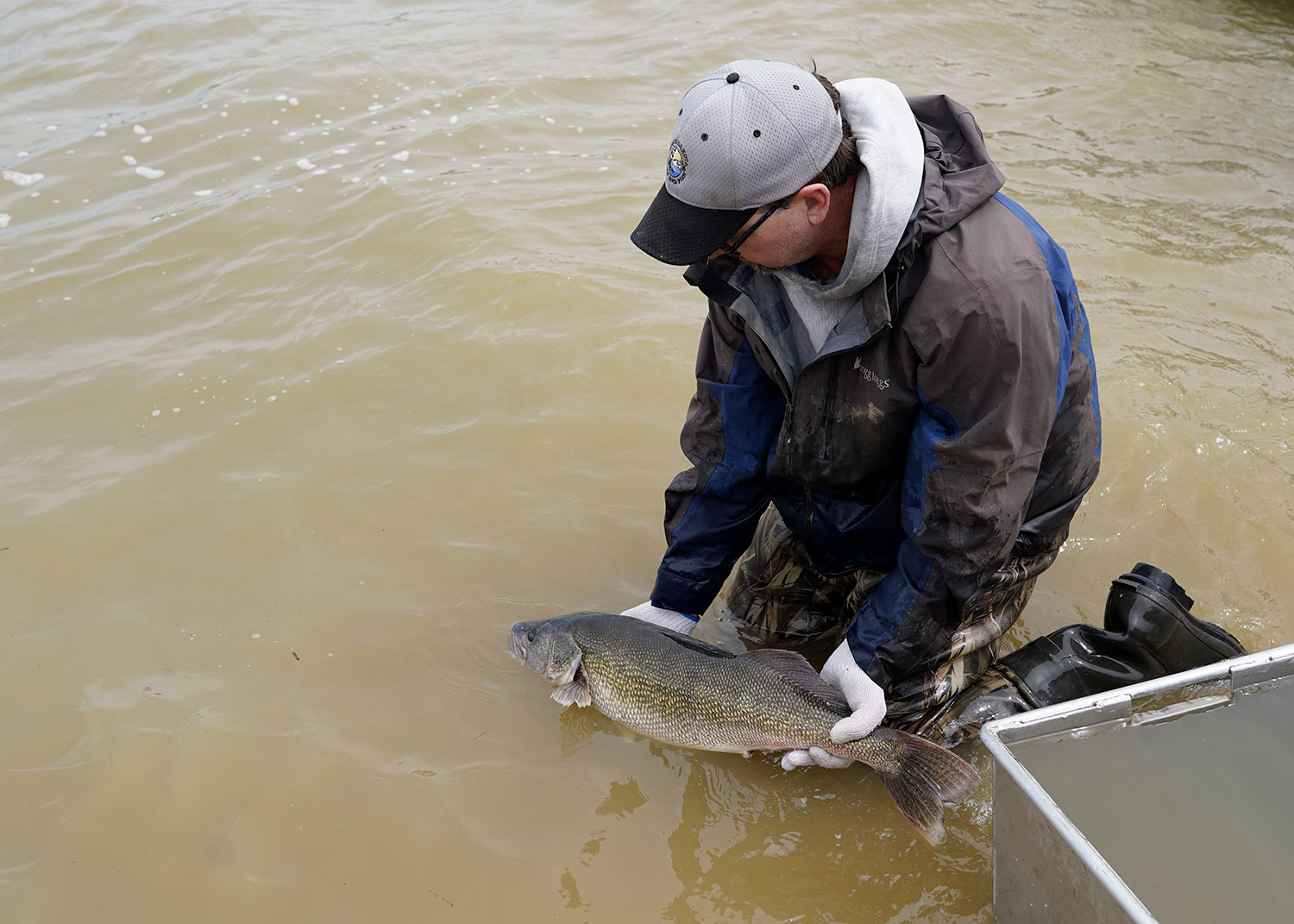
Fryda releases a spawned-out walleye.
